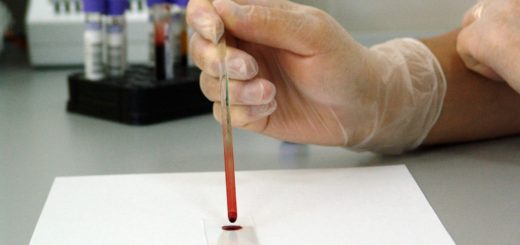Unlocking Beethoven’s DNA with locks of hair

A team of researchers from University of Cambridge — led by doctoral student Tristan Begg[1] — recently used five strands of Ludwig van Beethoven’s hair to sequence the musician’s genome. Although ancient DNA studies usually make use of human remains in the form of teeth or petrous bone[2] in the skull, scientific advancements have made it possible to gather information from human hair.
Much has been said of Beethoven’s poor health, especially in his later years. However, this is the first study that has pointed to genetic determinants of disease — specifically, liver disease. Researchers were already aware that Beethoven had attacks of jaundice — a symptom of liver disease. Begg’s work went further to indicate that Beethoven had two copies of a particular variant of the PNPLA3 gene[3], which is tied to liver cirrhosis, where scar tissue replaces healthy tissue in the liver, preventing its normal functioning.
Researchers also noted Beethoven had single copies of two variants of a gene that causes haemochromatosis[4], a heritable condition where a buildup of iron in the body (iron overload) damages parts of the body, such as the liver, joints and pancreas. Moreover, the study revealed that Beethoven was infected with the Hepatitis B virus (HBV) in the final months of his life, and perhaps even before. A chronic perinatal or childhood HBV infection would have been a strong driver of liver disease, while an HBV infection closer to the end of Beethoven’s life would have been less relevant[5].
The composer’s drinking[6] likely exacerbated the problem. It is well documented that a combination of genetics and environmental factors increases one’s risk of developing certain disease states, and Beethoven’s case demonstrated a fatal combination that culminated in death by liver cirrhosis at the age of 56.
Interestingly, the findings didn’t reflect the initial concerns of the researchers. For instance, they found no evidence of genetic markers for the gastrointestinal upsets that plagued the composer for much of his life, or of the hearing loss that eventually led to his deafness at the age of 44. Instead, the genetic evidence illuminates the organ system most responsible for the composer’s demise: the liver.
This groundbreaking study illustrates the valuable contribution and potential of genomics as a novel “primary source” in historical biography, or as Begg puts it, “Genobiography”. In 1802, Beethoven himself wrote, in a letter to his brothers known as the Heiligenstadt Testament[7], that he wanted doctors to study his health problems after he died. Honoring that wish, the researchers are making Beethoven’s sequenced genome publicly available. They hope that it spurs future analyses to unlock more clues about the musician’s life.
[1] https://www.clarehall.cam.ac.uk/news/beethovengenome23/
[2] https://biobeat.nigms.nih.gov/2018/04/
[3] https://www.ncbi.nlm.nih.gov/pmc/articles/PMC3070300/
[4] https://www.genome.gov/Genetic-Disorders/Hereditary-Hemochromatosis
[5] https://www.cell.com/current-biology/fulltext/S0960-9822(23)00181-1#secsectitle0060
[6] https://www.ncbi.nlm.nih.gov/pmc/articles/PMC6776700/
[7] https://www.classical-music.com/composers/heiligenstadt-testament/
Edited by Hazel Imrie
Copy-edited by Molly Donald







